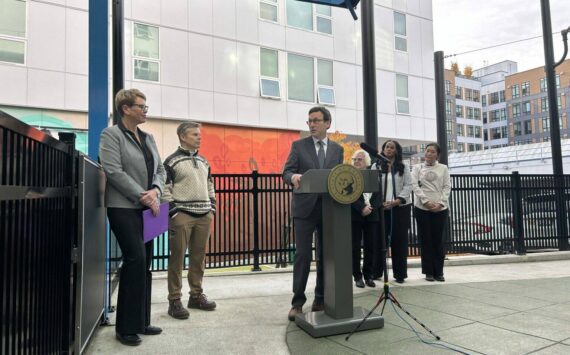Washingtons seasonally adjusted unemployment rate for July fell three-tenths of a percentage point to 7.5 percent, Employment Security Acting Deputy Commissioner Thomas Bynum announced Tuesday.
The nations seasonally adjusted unemployment rate fell two-tenths of a percentage point to 6.2 percent. Washingtons non-adjusted unemployment rate also fell by two-tenths of a percentage point to 7.4 percent.
The labor market in Washington continues to send mixed signals, Bynum said. Although the unemployment rate edged down based on household survey data, non-agricultural jobs declined during July and the number of people claiming unemployment insurance edged up.”
There are continued positive signs in the national economy, with a pick-up in factory orders and equity markets, Bynum explained. Still the overall labor market remains weak.
Washingtons nonagricultural wage and salary employment declined by 21,500 jobs in July a decrease of 0.8 percent. The dramatic declines were due to seasonal layoffs in state education (18,700), local education (15,300), and educational services (3,800).
There was only modest change in the rest of the economy. The largest increases showed in construction (3,300), and leisure and hospitality (1,900). Transportation and trade increased slightly, with wholesale trade up 800 jobs (0.7 percent), retail trade up 1,300 jobs (0.4 percent), and transportation, warehousing, and utilities up 900 jobs (1 percent).
Professional and business services were also up by 900 (0.3 percent), with a 1,100 job increase in employment services. Manufacturing was unmoved from June at 288,400 jobs, however, a decline of 900 aerospace jobs was offset by an increase in food processing jobs.
Washington is down 100 jobs since July 2002. This is the first year-over-year decline in 2003. Manufacturing accounts for the vast majority of job losses (21,200), since July 2002, with aerospace accounting for about half of the decline.
Jobs losses over-the-year in the service sector included only transportation, warehousing, and utilities (2,000), and information (400).
Largest over-the-year gains were seen in construction (2,100), trade (2,500), financial activities (2,500), professional and business services (1,000), education and health services (8,300), leisure and hospitality (2,300), and government (4,400).
Financial and health services have remained strong and there is some beginning strength in construction, trade, and leisure and hospitality. Still, job growth in these sectors has not been strong enough to outweigh the declines in manufacturing, transportation and warehousing, telecommunications, and some types of business services.
While government remains up over the year, about a third of the job growth was due to education and much of the rest to increases in local government.
BY THE NUMBERS:
UNEMPLOYMMENT
July 2003
Seasonally Adjusted
Washington State: 7.5 percent
United States: 6.2 percent
Not Seasonally Adjusted
Pierce County: 8 percent
Washington State: 7.4 percent
United States: 6.3 percent




